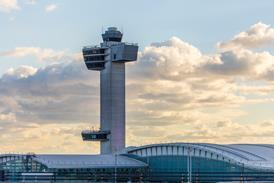The 1990s were years of unprecedentedly intense activity aimed at improving airline safety. So what happened? There were more fatal accidents and more human casualties in that decade than in the 1980s.
Despite active flight safety campaigns by major international agencies, more modern aircraft and air traffic control systems, and a more analytical approach to the art and science of air safety by aircraft manufacturers and many of the world's airlines themselves, accident numbers rose.
In addition to the encouragement, guidance and equipment, the motivation was also there. Even before the 1990s began, the airlines were warned that passengers would start turning away from air transport if accident numbers increased with industry growth. Were the airlines just not listening?
In some cases probably not, but enough were. Total accident figures rose, but the risk per flight and per passenger in the 1990s was slightly less than in the preceding decade, and the improvement in safety rates continued, if only gently, through the 1990s.
Safety efforts in the last decade, however, have been positively heroic in many sectors. To cite but a few: the Flight Safety Foundation for its research into ways of reducing the risk of controlled flight into terrain, and its ongoing approach and landing accidents reduction programme; the International Air Transport Association for its work in helping third-world countries to improve their training and infrastructure; the International Civil Aviation Organisation (ICAO) for shaking off its inherited state of bureaucratic trance and becoming active in safety promotion - especially winning the mandate for its national safety audit programme; Boeing and the International Federation of Airworthiness for studies which have immeasurably advanced the understanding of human factors in maintenance; the US Federal Aviation Administration for a study which identified the human factors problems inherent in the first-generation digital flightdecks; Airbus and Boeing for their work in improving modern flightdecks and the training for them. That is by no means all. So why did the accident totals of the 1990s not fall? Industry growth is the mathematical reason, but all the effort was specifically to prevent accident numbers rising with expansion.
Essentially, all the programmes in place needed patient analysis and the results are slow-acting cures. They set out to change attitudes and introduce safety cultures, always a gradual process. Some of the programmes, such as ICAO's mandate to carry out national safety audits, have required wide consensus which was won and implemented only by the end of the decade, so its influence has yet to be felt.
As for technology, it was easy to predict the advantages of the highly automated flightdeck, but it took time and, unfortunately, accidents to learn the downside. The expression "human-centred design" indicates the philosophy which - hopefully - is driving those who introduce new technology into aerospace. As long as humans operate or monitor technology, its logic must be simple and transparent, and the interface is as important as the equipment and its function. The new terrain awareness and warning systems alone have huge potential for reducing fatal accidents.
Economics also had its part to play. Asia- Pacific's "tiger economies" grew so fast that some of their airlines expanded too quickly for safety. China's airline industry was the most dramatic example. After a series of accidents, the government stepped in and reined back growth so that training and infrastructure development could catch up. Safety improved markedly.
Now many crucial safety programmes are coming to fruition and, for the first time, the world is in a position to enforce safety on a global scale rather than nation by nation. Safe airlines will have their positions bolstered by more skilful use of more thoughtful technology, and new global oversight systems will force poor performers to improve. If the industry delivers to its potential, the next 10 years promise much safer flight for the world's air travellers.
Source: Flight International























